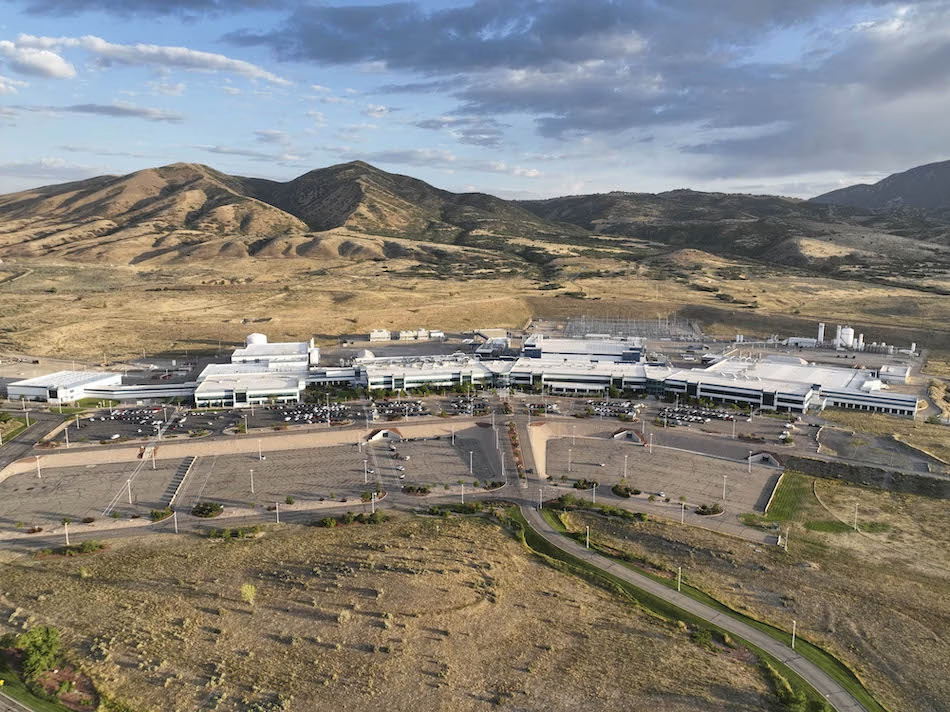Texas Instruments (TI) has unveiled a monumental $60 billion investment to build or expand seven chip making facilities across three mega-sites in Texas and Utah. This mammoth commitment, which company leaders are already calling the “largest investment in foundational semiconductor manufacturing in U.S. history”, will create approximately 60,000 jobs. TI also emphasized the production of 300 mm analog and embedded chips, essential for smartphones, cars, medical devices, satellites, and more, marking a shift toward reshoring critical supply chains.
Aligned with National Policy Push
Moreover, this move echoes President Trump’s renewed call for semiconductor manufacturing to return home. Consequently, Commerce Secretary Howard Lutnick praised the deal, noting it will underpin U.S. chip production “for decades to come”.
TI highlighted the partnership, stating its collaboration with top companies like Apple, Ford, Medtronic, Nvidia, and SpaceX strengthens America’s technological leadership and national security. This approach matches other major U.S. projects, including Micron’s recent $200 billion pledge to expand memory chip manufacturing and R&D under the CHIPS and Science Act.
Also Read Enbridge Celebrates Completion of Orange Grove Solar Project in Texas
What It Means on the Ground
On the ground, TI’s investment breaks down as: $40 billion for four fabs in Sherman, Texas (two already under construction) and $15 billion for sites in Richardson, TX and Lehi, Utah.
Altogether, these facilities will produce hundreds of millions of chips daily. Although TI hasn’t provided a specific construction timeline, it confirmed that SM1 in Sherman is on track to enter production this year.
A Strategic Move, Not Without Questions
Finally, while TI frames this as a bold reshoring move, industry analysts caution that much of this investment was already planned. As one observer noted, TI’s announcement may partly reflect existing capital expansion rather than entirely new money. Nevertheless, its investment solidifies the U.S. position in foundational chip making and sets an example for future resilience, through challenges remain in execution, funding uncertainty from policies like the CHIPS Act, and potential trade tensions.
Also Read Intel’s $20 Billion Ohio One Chip Plant Delayed Until 2030
The Texas Instruments Chip Projects Overview
Total Investment
Over $60 billion planned to build and expand semiconductor facilities across the U.S.
Split: $40 billion for Sherman, Texas (4 fabs: SM1–SM4), $15 billion for Utah site, and remaining $5 billion across Richardson, TX
Locations & Facilities
Sherman, Texas: Two fabs under construction (SM1 launching production this year; SM2 shell complete) plus two additional fabs planned.
Richardson, Texas: Expansion of existing fabs (RFAB2 ramping up)
Lehi, Utah: Second fab under construction alongside ramping up LFAB1
Job Creation
Project will deliver approximately 60,000 new jobs across construction and operations.
Chip Focus
Facilities will manufacture analog and embedded processing chips (foundational semiconductors) using 300 mm wafer processes
Chips supply a broad range of industries: smartphones, vehicles, medical devices, satellites, AI infrastructure
Strategic Alignment
Branded as the largest-ever U.S. foundational semiconductor investment
Aligned with Trump administration’s push to reshore chip manufacturing and strengthen supply chains
Receives $1.6 billion CHIPS Act subsidy and support from major clients including Apple, Ford, Medtronic, Nvidia, and SpaceX

